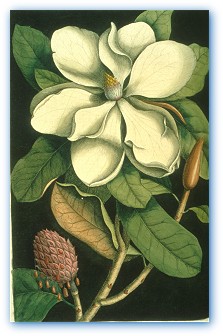 The Biodiversity Heritage Library has released a new user interface. The new interface was informed by usability studies and is based on the design and functionality of the BHL-Australia portal.
The Biodiversity Heritage Library has released a new user interface. The new interface was informed by usability studies and is based on the design and functionality of the BHL-Australia portal.
Category: Natural and Physical Sciences
 The International Data Group’s Computerworld Honors Program announced the Biodiversity Heritage Library as a 2013 Laureate on March 19. The annual award program honors visionary applications of information technology promoting positive social, economic and educational change.
The International Data Group’s Computerworld Honors Program announced the Biodiversity Heritage Library as a 2013 Laureate on March 19. The annual award program honors visionary applications of information technology promoting positive social, economic and educational change.
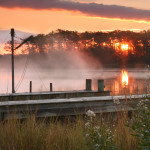
This post was written by Sue Zwicker, Reference Librarian at the Natural History Library and Smithsonian Environmental Research Center and a new addition to Smithsonian Libraries staff.
The Smithsonian Environmental Research Center (SERC), in Edgewater, Maryland is a global leader for research focused on connections between land and water ecosystems. A staff of 17 senior scientists, and an interdisciplinary team of more than 180 researchers, technicians, and students, conduct long-term descriptive and experimental research that cuts across traditional disciplinary boundaries.
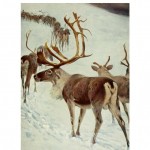 The Biodiversity Heritage Library (BHL), a consortium of institutions working to digitize biodiversity literature and make it freely available online at www.biodiversitylibrary.org, is helping scientists identify and conserve life on Earth. Scientists have long considered that inadequate access to the published literature is one of the chief impediments to the efficiency of research in the field. By removing boundaries to access, BHL is strengthening scientific and conservation efforts on every continent. The BHL currently provides access to nearly 40 million pages and over 50,000 images, free and available to the public online.
The Biodiversity Heritage Library (BHL), a consortium of institutions working to digitize biodiversity literature and make it freely available online at www.biodiversitylibrary.org, is helping scientists identify and conserve life on Earth. Scientists have long considered that inadequate access to the published literature is one of the chief impediments to the efficiency of research in the field. By removing boundaries to access, BHL is strengthening scientific and conservation efforts on every continent. The BHL currently provides access to nearly 40 million pages and over 50,000 images, free and available to the public online.
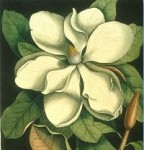 The Smithsonian Libraries, in conjunction with the National Museum of Natural History, will host a series of lectures on both Mark Catesby’s art and science for the Catesby Commemorative Trust on Tuesday, November 6. This gathering celebrates the 300th anniversary of Englishman Catesby’s arrival in North America. The visit to the Smithsonian is part of a six-day, three-city symposium that will include lectures by more than 20 presenters from various disciplines including art, wildlife, natural history, conservation and economics.
The Smithsonian Libraries, in conjunction with the National Museum of Natural History, will host a series of lectures on both Mark Catesby’s art and science for the Catesby Commemorative Trust on Tuesday, November 6. This gathering celebrates the 300th anniversary of Englishman Catesby’s arrival in North America. The visit to the Smithsonian is part of a six-day, three-city symposium that will include lectures by more than 20 presenters from various disciplines including art, wildlife, natural history, conservation and economics.
The English naturalist published The Natural History of Carolina, Florida and the Bahama Islands in three volumes from 1729 to 1747, making it the first published account of the flora and fauna of the New World. The Joseph F. Cullman 3rd Rare Book Library contains a first edition copy of The Natural History, which will be displayed after the symposium. This work, along with others by Catesby, can also be seen online at the Biodiversity Heritage Library.
This event is FREE and open to the public!

Earth’s biodiversity is under constant threat as loss of habitat leads to the extinction of species. Thousands of species—plants and animals—are disappearing every year, and one of the most endangered is the rhinoceros. The Smithsonian Institution takes part in a global effort dedicated to the survival of endangered species and their habitats, and through its collections and staff, the Smithsonian Libraries participates in this work by supporting and enhancing research in wildlife conservation biology. It has opened the exhibition “Fascinating-Endangered RHINO,” which will be on display from September through April 30, 2013, at the Smithsonian’s National Museum of Natural History.
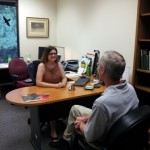 The end of an era has come to the Smithsonian Libraries and a new one begins! The current model of a library, with a physical location, books and journals on the shelves and a librarian to manage it all is so 2011. A hip, new model of a ‘ librarian-as-reference-resource-person-embedded-in-research-department’ has come for the National Zoological Park/Smithsonian Conservation Biology Institute in 2012!
The end of an era has come to the Smithsonian Libraries and a new one begins! The current model of a library, with a physical location, books and journals on the shelves and a librarian to manage it all is so 2011. A hip, new model of a ‘ librarian-as-reference-resource-person-embedded-in-research-department’ has come for the National Zoological Park/Smithsonian Conservation Biology Institute in 2012!

